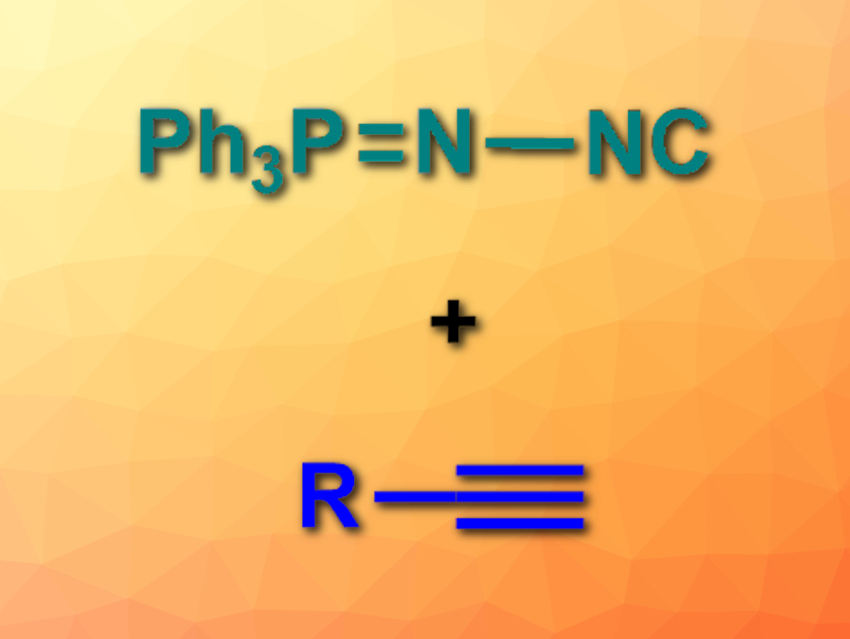[3 + 2] Cycloadditions using alkynes and isocyanides are efficient and atom-economical reactions for the synthesis of heterocycles. However, these reactions usually require isocyanides with an acidic hydrogen. Such small isocyanides often have a very unpleasant smell and some of them are toxic.
Zikun Wang, Northeast Normal University, Changchun, China, Xihe Bi, Northeast Normal University and Nankai University, Tianjin, China, and colleagues have developed a silver-mediated [3 + 2] cycloaddition of alkynes and N-isocyanoiminotriphenylphosphorane (NIITP, pictured) to give substituted pyrazoles. The team used Ag2CO3 as a catalyst, Mo(CO)6 as an additive, MeOLi as a base, and tetrahydrofuran (THF) as a solvent.
The desired pyrazoles were obtained in good yields. Arylalkynes reacted particularly well, while alkylalkynes gave slightly lower yields. NIITP is safe, odorless, solid, and easy to handle. The reaction mechanism involves the formation of a silver acetylide derived from the alkyne and Ag2CO3. According to the researchers, they are investigating other posssible uses of NIITP.
- Silver-Mediated [3 + 2] Cycloaddition of Alkynes and N-Isocyanoiminotriphenylphosphorane: Access to Monosubstituted Pyrazoles,
Fanhua Yi, Wanjun Zhao, Zikun Wang, Xihe Bi,
Org. Lett. 2019.
https://doi.org/10.1021/acs.orglett.9b00860




